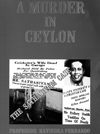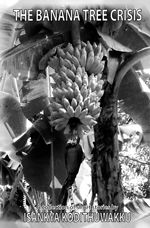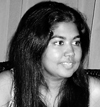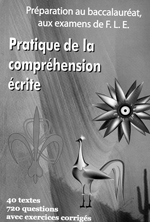|
|
|||||||||||
|
The other side of the Sathasivam case A Murder In Ceylon: The Sathasivam Case by Prof. Ravindra Fernando. Vijitha Yapa Publications. Reviewed by Firoze Sameer
Crime Author Parallel contrary views Confusing the jury Ranjani taxi-cab murder Ceylon: Turf Club robbery and murder Chandrasekera Dias murder: Cross-examined by the defence for almost nine days to shake his testimony to throw doubts on the time of death, they could not shake his evidence on the cause of death as a result of homicidal strangulation. The seven-member Sinhala-speaking jury's unanimous verdict saw Mrs. Rohini Dias and chauffeur Nimal Fonseka being acquitted on 04.09.82. Sathasivam murder case: Hostile witness 1. IGP Sir Richard Aluvihare, KCMG, breaks protocol, requesting Prof. G. S. W. de Saram, Professor of Forensic Medicine of Peradeniya University, to conduct the autopsy over the JMO, Dr. P. S. Gunawardene. 2. Prof. de Saram's dogged stance insisting on conducting the autopsy by himself sans assistance from the JMO portrays a psyche of blatant infallibility (p137). 3. Re: Time of death – his postmortem report states 10.00/11.30 a.m. and, after conducting experiments on executed prisoners on Sir Sydney Smith's advice, changes it to 11/11.15/11.30 a.m. in and not earlier than 10.45 a.m.! (p169). 4. This stance stood diametrically against the temperature/alimentary tests conducted by Professors Paul and Peiris, and tests by the radiologist Dr. A. H. N. Welikala indicating 9.30 a.m. keeping with William's story. 5. Prof. de Saram's aversion from pronouncing executed prisoners dead, revealed his stance against capital punishment. Prof. G. S. W. de Saram, called as a prosecution witness, at the very outset turns a hostile witness. OP Mack 1. Sathasivam's voluntary statement made on 31.03.52 at the magisterial inquiry held by N. M. J. Rajendram, indicates thus (p280-281): Mr. Sathasivam said that he then had sexual intercourse with his wife (on the 9th morning). “After my bath I came out of my bedroom. While I was rubbing myself down I remember my wife telling me, ‘Summons has also been served and I do not know what I could tell Mr. Mack if I conceived’.” 2. OP Mack acting for Mrs. Sathasivam in the divorce case states that some time between 10.30 a.m. and 12 noon on the 9th he received a call from a lady who asked him whether summons had been served in the divorce case. Although she did not give her name, he presumed it to be the voice of Mrs. Sathasivasm. However, he entertained some doubts later. But then we all know from Sathasivam's very statement that Mrs. Sathasivam already knew that summons had been served on Sathasivam on the 8th (p17). Why would she query Mack again? William 1. A villager,18 years, just 11-days in service in the Sathasivam household, bereft of any education or imagination, tells a long story, ball by ball in cricket parlance, on how the master threatened him and made him an accessory to a murder, and all the attendant actions of going about it, from the bedroom via the pantry, right through the kitchen and to the garage, and later being given a part of the jewellery. This is unimaginable for such a villager to concoct. 2. The controversial abrasion on the victim's back could easily have been caused while the body was being carried via that narrow 17-inch passage between the pantry and garage. 3. The drag mark on the kitchen could very well have been one of the victim's feet being dragged along that same passage, thereby causing blackening of that foot. The victim could even have stained her feet by walking about the kitchen before she was murdered. 4. The victim's head injury, as opined by the defence, was the cause of William hitting her with a piece of firewood, followed by strangling her, is rather far fetched. He could have continued to hit her with that piece of firewood, better still that blowpipe, and done his foul deed. 5. That William attacked Mrs. Sathasivam from behind vis-à-vis she having approached him from the pantry to the kitchen while facing him, when that “protrusion” allegedly causing the abrasion between her shoulders, was at the point of the narrow passage leading to the garage far behind William. Also, if he had approached her from behind, how come he received those scrape marks? 6. The dead body had husk scrapings, not coconut scrapings, on the neck region. Evidently, the body was lying close to a whole heap of coconut husks. William was scraping a coconut at that time. William's confession at an early stage to the murder was a strongpoint with the defence, but then his motive of robbery was flawed, since there was enough wealth in the house he didn't steal. Sir Sydney Smith, CBE Alles states that “in both cases, that of Sydney Fox and Sathasivam, Sir Sydney Smith appears to have displayed a weakness of too readily supporting his medical opinions by an acceptance of non-medical facts, on which a forensic expert is not competent to express an expert opinion.” Quickshaws 1. William's evidence on leaving the residence about 09.30 a.m. and meeting with V. S. N. Shanmugam was established at the trial. 2. Quickshaws driver Pabilis's log sheet shows he left Majestic cinema in Bambalapitiya in response to Shanmugam's call at 9 a.m. for High Street, and according to both Pabilis and Shanmugam, they both travelled together in the taxi from 9.45 a.m. to 11 a.m. that morning. The log sheet strangely showed an ‘erasure’ after the numeral nine, for which he could not give a satisfactory explanation. 3. Quickshaws driver M. L. A. Perera picked Sathasivam at 10.30 a.m. at his home, and after having driven down the lane, turned the vehicle, and while travelling towards Galle Road glanced at the Sathasivam household and at the entrance saw Mrs. Sathasivam. This was a time divorce action was filed against her husband, and here she was at the door to send her husband off! 4. Quickshaws manager, Allen Mendis's evidence that Mrs. Sathasivam called just before 10.30 a.m. notwithstanding the log sheet entry stating ‘Sathasivam’. Obviously some sinister hand at Quickshaws was tampering with evidence, detrimental to the interests of Sathasivam. Conflicting evidence The damning evidence of simple people who gave details of time, action, and events absolutely ignorant about the implications their evidence will relate to the time of the crime vis-à-vis the so-called experts, who were stubbornly insisting on various times and happenings, using their tenuous and conflicting medical expertise and experiments to substantiate their position, being cognizant their evidence will either save or send Sathasivam to the gallows. Professors Paul and Peiris's evidence conflicted with Professors de Saram and Sydney Smith, obviously casting doubts in the minds of the lay jury, let alone the eminent judge's direction to the jury, which appeared to lean more in favour of Sathasivam. A hard-fought attempt was on the cards to save Sathasivam from the gibbet, since William too had turned crown witness, and at the end of the day, nobody was going to be hanged. The verdict of the unsequestered (as opposed to the OJ Simpson case) jury to acquit unanimously. Points to ponder 1. Sathasivam was a prominent and popular all-Ceylon cricketer vis-à-vis William, a nonentity. 2. The eminent trial judge E. F. N. Gratiaen (later CBE, QC) was a sportsman himself. 3. The English-speaking jury, comprised folks favouring Sathasivam's prowess at cricket. 4. Colvin R. de Silva's inimitable charisma over solicitor-general T. S. Fernando (later CBE, QC) swayed the jury. 5. Conflicting medical evidence amongst experts vis-à-vis that of ordinary folk. 6. Sinister and powerful hands working behind the lines in favour of Sathasivam. 7. Affluent friends like M. M. Haniffa allegedly doling out funds. 8. Some support for Sathasivam from a section in the police department. All these aspects favoured Sathasivam, who had a strong motive to kill his wife after divorce action had been filed on the 8th – which was obviously going to succeed against his interests – and he stood to lose all, including his lover Yvonne Stevenson, whom he wouldn't have been able to support, let alone pay alimony to his wife. His last try for reconciliation on the 9th morning appears to have failed. Editing
Into the heart of matters The Banana Tree Crisis by Isankya Kodithuwakku Reviewed by Ayesha Inoon The characters come from all walks of life. They laugh and cry, dream impossible dreams and struggle to survive against the barriers of their existence. The clash of their diverse opinions, the stubborn resistance of a culture to change, and the inevitable return to traditional ways materialise through the pages of Isankya Kodithuwakku’s debut collection of short stories, The Banana Tree Crisis.
For this 24-year-old, the book is the culmination of many years of observation and of personal experiences that she has been able to step back and look at in a different light. “Sometimes, little things that don’t seem important at the time can make great stories,” she says. Her stories take us beyond the ‘little things’ to the deeper thoughts and significances behind ordinary events. The title story, ‘The Banana Tree Crisis’ describes a quarrel between a young Sri Lankan woman and her American neighbour over the cutting of a banana tree on the border of their homes on Ward Place. The symbolism of the story is apparent – with the American embodying the superior attitude of the West towards Third World countries, while the woman, with her long history and neglected potential, is representative of Sri Lanka itself.
When you travel overseas, says Isankya, you get to see Sri Lanka from a different perspective. As a result you tend to appreciate your motherland more and to see things more acutely. As the daughter of the former Minister of Education, Dr. Karunasena Kodithuwakku, Isankya has travelled extensively, accompanying her father on diplomatic assignments to Japan and South Korea as well as visiting other countries. Her love of reading, combined with the emphasis on language skills in her primary schooling abroad, led to her writing stories even as a young child. Despite having done her A/Levels in the mathematics stream and being selected to the University of Sri Jayewardenepura, Isankya chose to follow her dream to be a writer. She was awarded a scholarship from Kenyon College, a small Liberal Arts College in Ohio, to major in International Studies, and also to study creative writing. Her years at college in the U.S. gave her an insight into how differently Sri Lanka was perceived in the eyes of others, and helped her to sharpen her writing skills. Being a politician’s daughter not only let her see the personal side to politics, but also gave her remarkable exposure, she says, recalling especially the visit to Jaffna with her father soon after the Ceasefire Agreement was signed. In her story, ‘The House in Jaffna’, strikingly vivid descriptions create pictures of the desolation and rugged beauty of the war-torn landscape of Jaffna. Having fled to London to escape the violence of the war, Mr. Nadarajah returns with his family in the hope of returning to life the way it was before the war. The eager hope and the conflicting doubts in his mind as his children protest his decision, and the growing despair as he realises the futility of his dream to return to normalcy are described with a sensitivity that leaves the reader with a sense of yearning for what cannot be. Isankya believes that one has to sit back for about ten years before writing a story based on a personal experience, because it is only then that you will see it for what it really was. She laughingly refers to the story ‘How Mrs. Senarath Called a Marriage for Mala’, which is based on a maid who worked for her family several years before. The attitudes and needs of the servant Mala and her employer, who wishes to treat her fairly as well as keep her from quitting like the other servants before her, make up a tale that is humorous as well as poignant. Returning home after graduating with the highest honours from Kenyon College, she immediately plunged herself into tsunami relief efforts and spent a year working with the Sarvodaya Shramadana Movement. The last two stories in her book, ‘Buffer Zone’ and ‘Shallow Canoes’ take us deep into the physical and emotional struggles of the tsunami survivors and discuss both the good and the evil that came out of the spate of post-tsunami aid. “Even if you have a gift, the craft of writing is something to be learned and to be sharpened with techniques, just as a piano player has to practise playing the piano,” says Isankya. She herself has far to go, she adds. These stories were her maiden experiments and she hopes she will gain greater skills, as she continues to write and learn. Having received a fellowship to do Postgraduate Studies in Writing at the Columbia University, Isankya left for New York this month. She hopes to return and teach creative writing in Sri Lanka.
Guide to learning French Pratique de la Comprehension Ecrite by Mahendra Pathirathne Reviewed by Malith Senanayake In this global village of today, where every nation is close to each other as never before, the enthusiasm to learn foreign languages has increased immensely. Mahendra Pathirathne recently released Pratique de la Comprehension Ecrite, at Alliance Francaise de Colombo, where he has a remarkable service record, over 20-years, as a French teacher.
By writing this book he hopes to serve G. C. E. A/Level students, teachers and enthusiasts of the language, who struggle without proper study materials. The author writes on the methodology of the French language to help students learn the language in a more relaxing way, while avoiding common errors committed as beginners. This is his third book, the first two of which are rightful properties of the National Institute of Education (N. I. E). The book consists of 40 comprehension passages, with 720 questions and answers. The Asian touch given to some passages would enable Sri Lankans to make themselves familiar with the given exercises. The book will greatly assist G. C. E. A/Level students with the comprehension passage, a section which trips them up at the examination. The author holds a first class honours degree in French, German and Japanese from the University of Kelaniya. He did his Masters at Sorbonne-nouvelle, Paris-III and is a former lecturer of the University of Peradeniya. He was also a former consultant in foreign languages to the Ministry of Education (MoE). He was among the last batch of students who went to France under the sponsorship of the Republic of France for their higher studies. It has been the author’s goal to fill the gaps in French education in Sri Lanka as much as possible. Those interested in his book could contact Mahendra Pathirathne on tel: 033-2225439. |
|||||||||||
Copyright © 2006 Wijeya Newspapers
Ltd. All rights reserved. |



